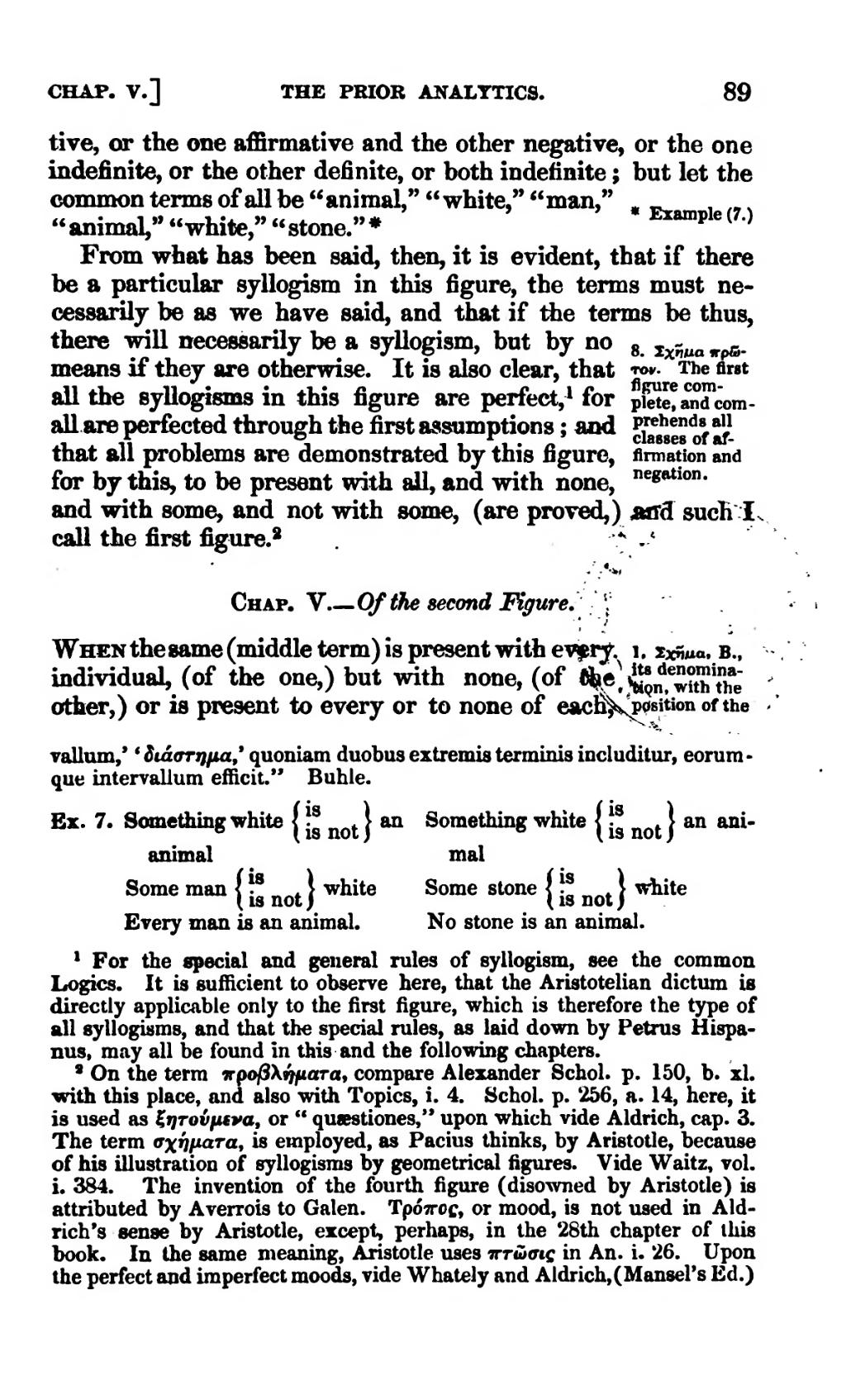tive, or the one affirmative and the other negative, or the one indefinite, or the other definite, or both indefinite; but let the common terms of all be "animal," "white," "man," "animal," "white," "stone."
From what has been said, then, it is evident, that if there be a particular syllogism in this figure, the terms must necessarily be as we have said, and that if the terms be thus, there will necessarily be a syllogism, but by no means if they are otherwise. It is also clear, that all the syllogisms in this figure are perfect, for all are perfected through the first assumptions; and that all problems are demonstrated by this figure, for by this, to be present with all, and with none, and with some, and not with some, (are proved,) and such I call the first figure.
Chapter 5
When the same (middle term) is present with every individual, (of the one,) but with none, (of the other,) or is present to every or to none of each,
